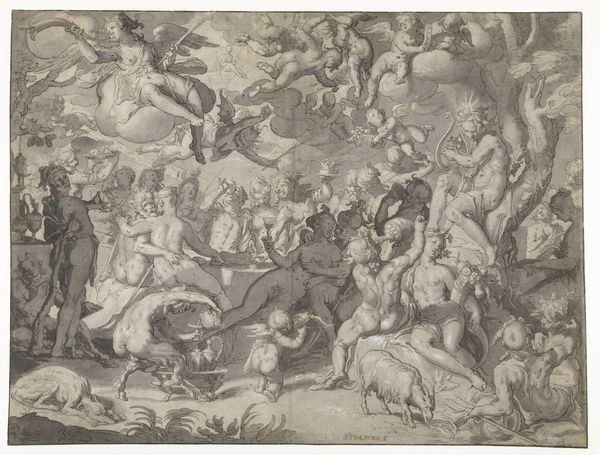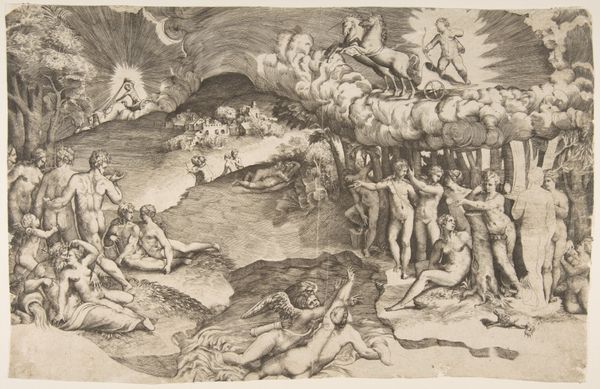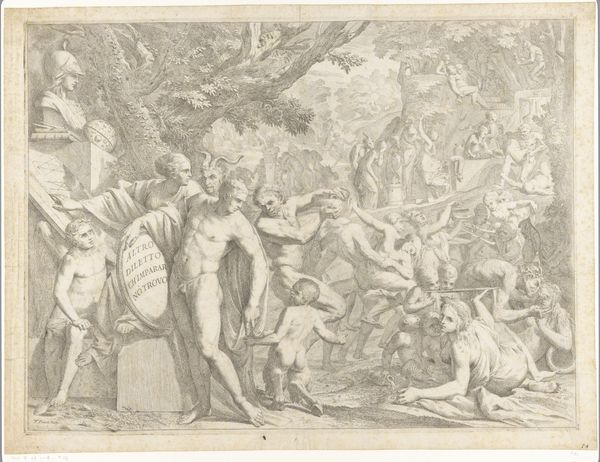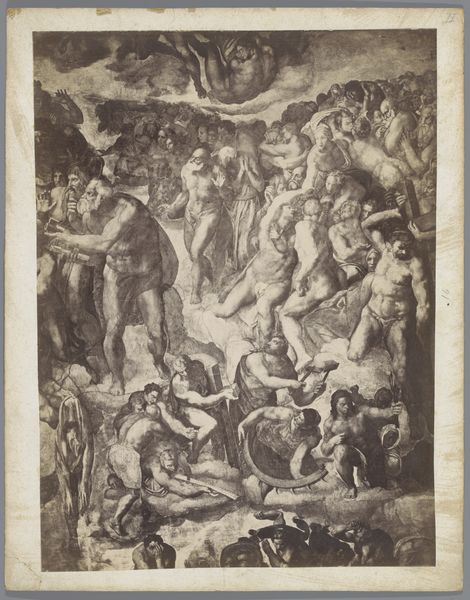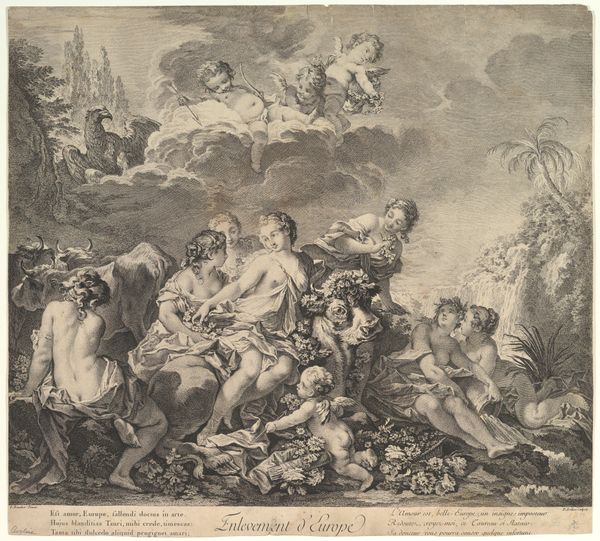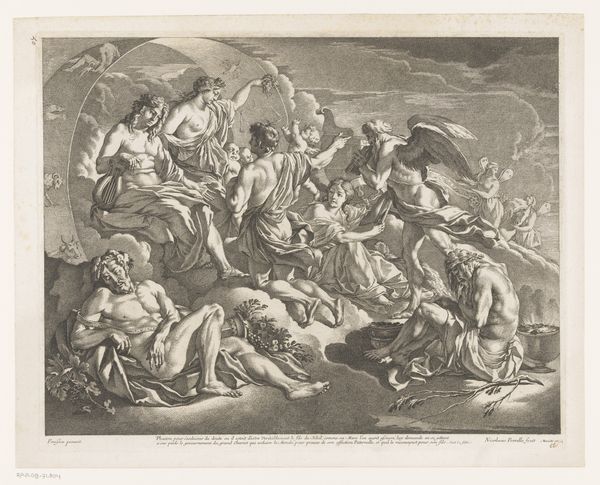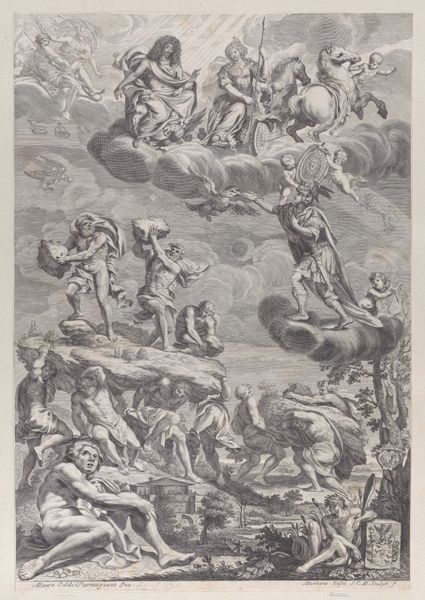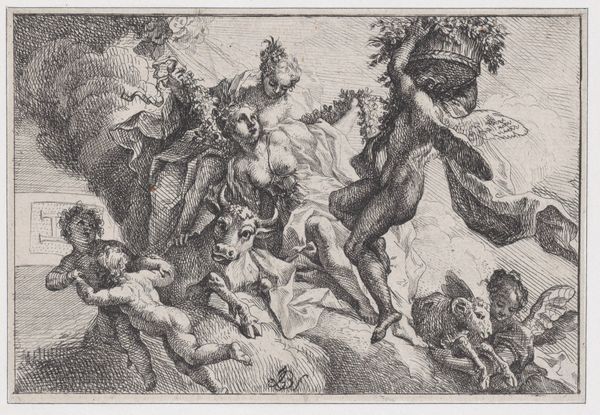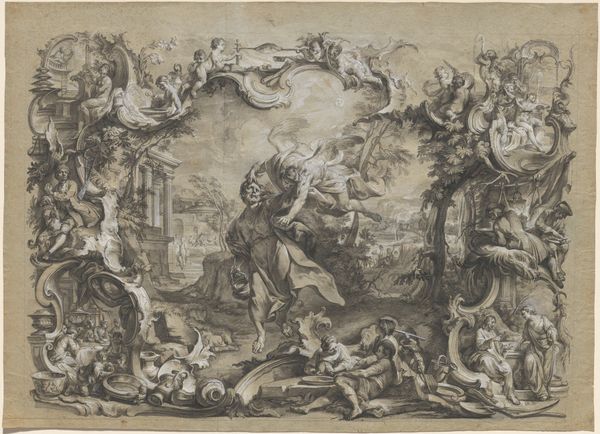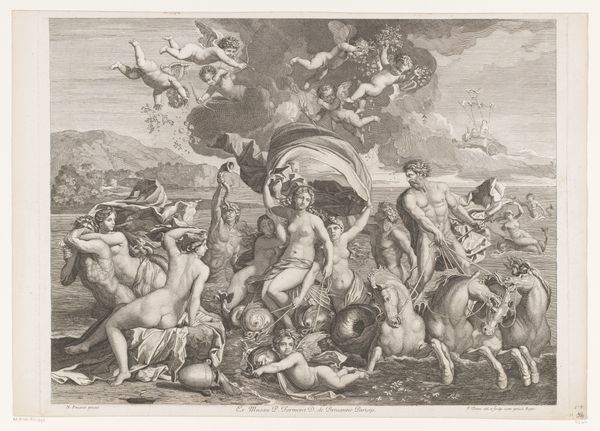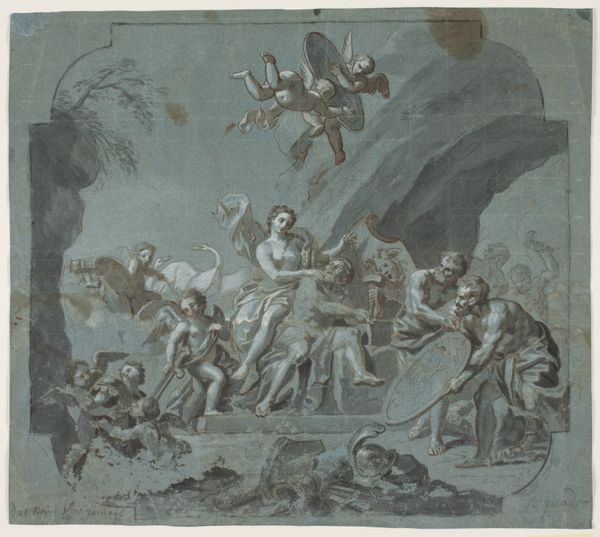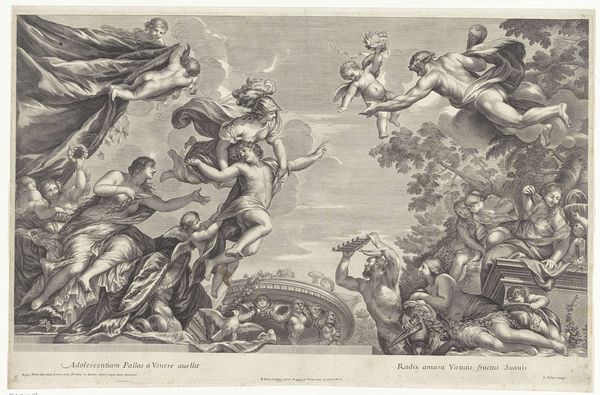
The Feast of Venus, with groups of satyrs, nymphs, and putti dancing around a statue of Venus 1732
0:00
0:00
drawing, print, engraving
#
drawing
#
allegory
#
baroque
# print
#
figuration
#
genre-painting
#
nude
#
engraving
Dimensions: Sheet (Trimmed): 9 5/8 × 13 1/8 in. (24.5 × 33.3 cm)
Copyright: Public Domain
"The Feast of Venus," made by Anton Joseph von Prenner, probably in the first half of the 18th century, is an etching on laid paper. Etching is an indirect process. The artist doesn’t work directly on the plate, but instead uses acid to bite into it, creating recessed lines that hold ink. The visual intensity of this print arises directly from Prenner's expert manipulation of line. Look closely, and you’ll see how he has densely packed the composition with figures and objects, using closely-hatched lines to create shadow and volume. In some areas, the paper is almost entirely black, while in others, the lines are so fine and sparse that the paper appears almost white. The process of etching allowed for multiple impressions to be pulled from the same plate. This made images like "The Feast of Venus" more widely accessible, helping to disseminate artistic styles and ideas, but also creating an opportunity for artists to gain income from their work. By considering the printmaking process, we can gain a deeper understanding of its cultural impact, and challenge traditional hierarchies in the history of art.
Comments
No comments
Be the first to comment and join the conversation on the ultimate creative platform.
